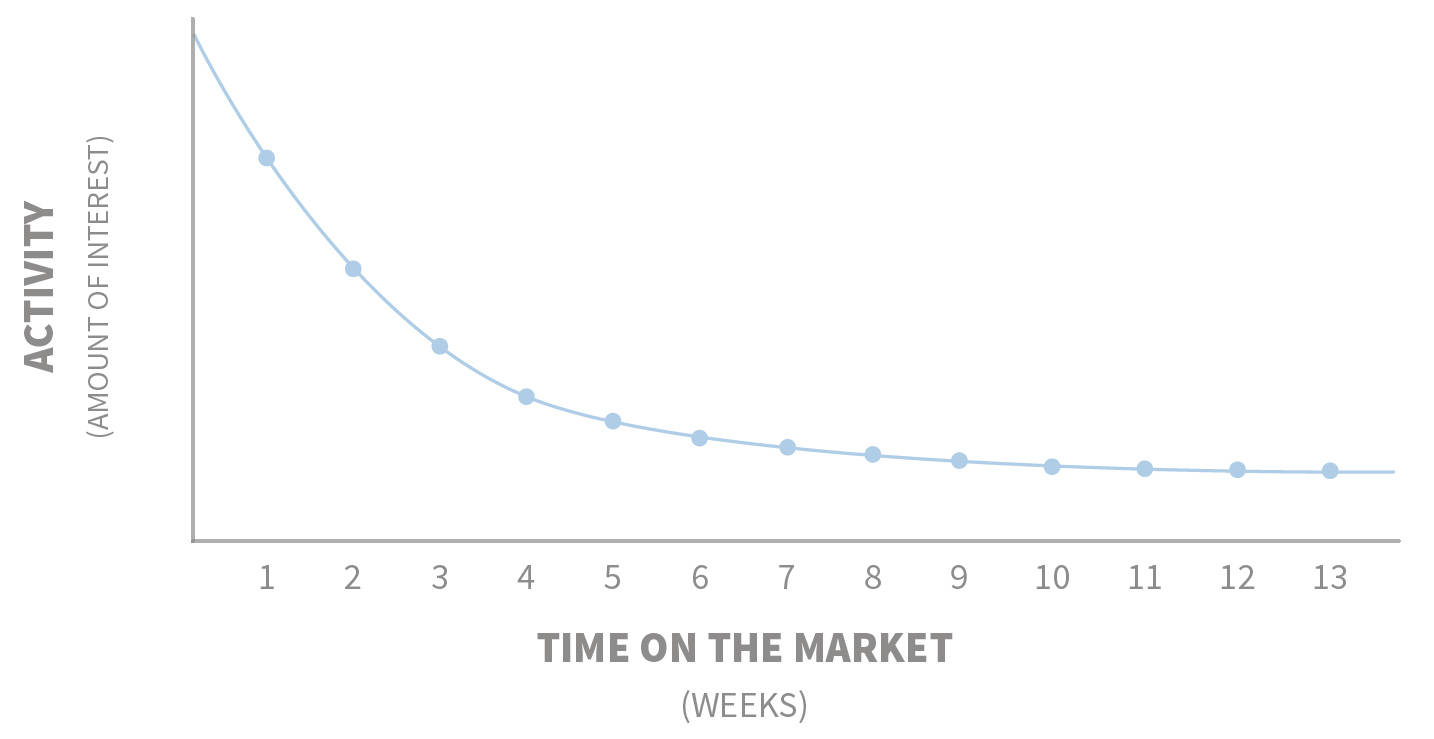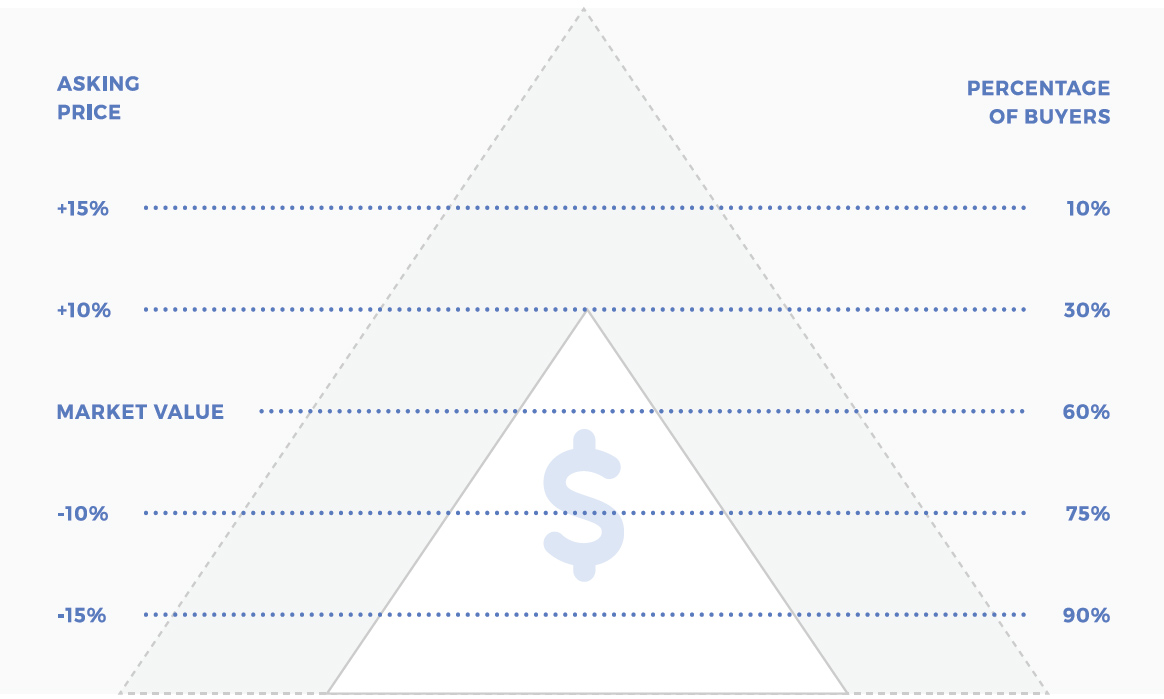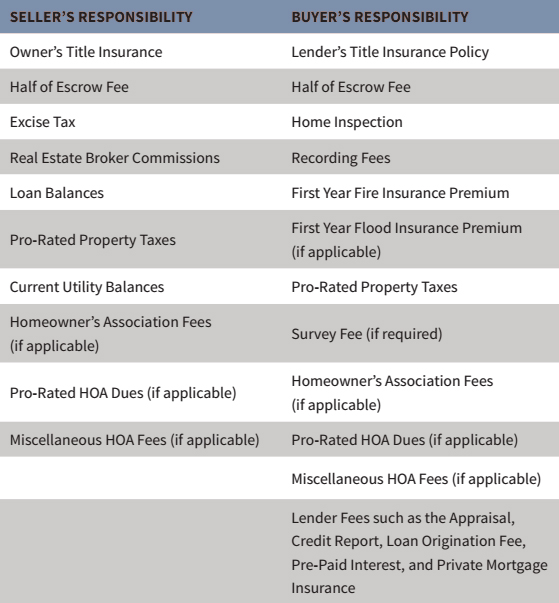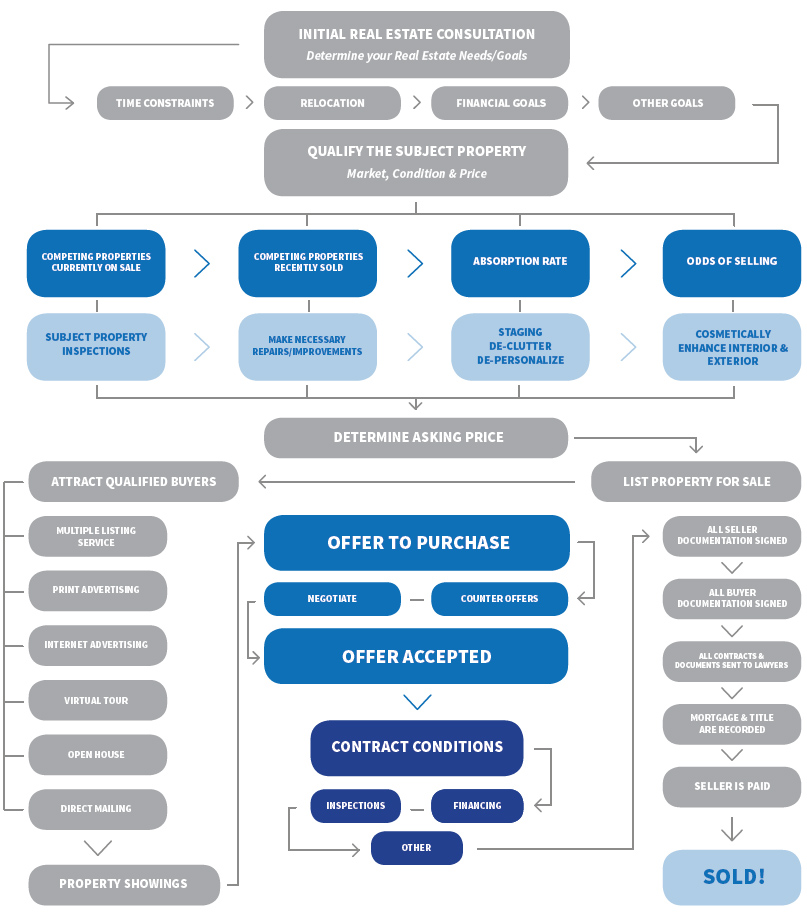Selling Your Home
My Listing Process and Selling Strategy
Deciding to sell your home is a major endeavor, and in most cases, your home is the most valuable asset you own. I understand the importance of selling for the best possible price, with your ideal terms. I am ready to work with you to make it happen.
Our Mutual Goals
I want to sell your home…
- At the highest possible price
- In the shortest amount of time, or within the timeframe you specify
- With the most favorable terms for you.
Consider me a teammate that is working with you to achieve the same goals.
Communication
In the beginning stages, I will work with you to prepare your home for showings, and I will coordinate the signing of necessary documents to list your home. We will discuss all choices that we make along the way, so you can be sure the sale is being managed in a way that suits you best.
Once your home is listed, I will provide periodic updates about recent activity and open houses. Buyer feedback can offer valuable insight into our marketing strategy, and it will allow us to adjust our strategy if needed.
All offers received will be presented to you for review, and I will discuss our negotiation strategy with you before responding. Once we decide on an offer, I will keep you informed about repair requests, milestones, and deadlines.
Throughout the process, I am just a call, text, or email away. I’m here to help, so feel free to share concerns or ask questions. If you need something, put me to work!
The Plan
MY PROVEN METHOD CAN BE BOILED DOWN TO THE 3 P’S:
- Price—A complete market evaluation will ensure your listing stands out, gets high traffic, and sells faster for the best price. It is extremely important to price a home correctly because a house stagnant on the market attracts few interested buyers. I utilize Intelligent Pricing and conduct extensive market research so your home is priced right.
- Presentation—I will prepare your home to highlight its best attributes, inside and out. First impressions are crucial, so I coordinate professional photography, landscaping, handiwork, and house cleaning. Many buyers start shopping online, so I aim to make the best possible impression and spark as much interest as possible. Of course, you have final say on what we can and can’t do to prepare your property for sale, but it’s important to understand that my recommendations are drawn from experience in what works best for each situation.
- Promotion—Your home will receive a complete and customized marketing campaign to attract the most potential buyers. Increasing the number of buyers who see your home in the first 10 days will result in higher and better offers to purchase. My marketing strategy was developed through research, experience, and innovation. I am statistically ahead of the curve when it comes to effective promotion, and I am always refining my methods to be more effective.
Making the Most of Initial Interest

The Window of Opportunity
The “Window of Opportunity” is the period in which your home will receive its maximum exposure; typically when your home is new on the market.
In order to capitalize on this window, it is crucially important that your home is ready for sale: priced at a fair market value, prepared to showcase its features and attributes, and a marketing strategy is implemented to further increase its exposure.
Intelligent Pricing and Timing
Pricing your home correctly yields measurably better results. The chart below shows how many buyers will see your home at different price levels.

Sellers often view their homes as special which tempts them to put a higher price on the home, believing they can always come down later, but that’s a serious mistake.
Overpricing prevents the very buyers who are eligible to buy the home from ever seeing it. Most buyers shop by price range and look for the best value in that range.
Statistically, by pricing at or near fair market value, more buyers will see your home and more competitive offers to purchase will be submitted. The first two weeks of marketing are crucial to selling the property. In that time, the home is fresh and exciting to buyers and their agents. It is important that your home is priced correctly from the beginning so that more people will consider it in their search.
Note:
An agent is an objective third party that can make a non-emotional assessment of the value of your home. Their expertise in this area is based on knowledge, training, and experience.
Comparative Market Analysis (CMA)
This is how we arrive at the recommended list price for your home. It is a personalized profile of what is happening in your neighborhood’s real estate market, and how it affects the price of your home.
The market value of your home is commonly determined by comparing it to the value of other homes that have recently sold in the area, or are currently listed on the market. It is an art and a science.
THE SCIENCE:
Using local MLS listing information and property tax records, I can find comparable homes by number of bedrooms, bathrooms, square footage, lot size, and an untold number of additional features. Then, using the information about how much those homes have sold for, or are being listed for, I can get in the ballpark of your home’s fair market value. Most online valuations stop here, but only an experienced agent can take it further.
THE ART:
Decisions must then be made about how to adjust the value of your property as compared to other homes. If an active listing is being used for comparison, and has been on the market for over 90 days, it’s safe to assume it’s overpriced and that people won’t pay that much for your home unless it’s in better condition or has more premium features. If your home is the only one on the block with a large deck, your value goes up as compared to the others.
In order to be as accurate as possible, your agent must look at your home to evaluate its condition, and get a sense for how it fits into the neighborhood. By drawing accurate conclusions from an accurate set of data, your home will be priced correctly.
Note:
The CMA, as you can see, requires a lot of technical experience, neighborhood knowledge, and critical thinking on behalf of your agent. A poorly executed CMA might compare your property to other properties that are not similar, or it might draw the wrong conclusions from the data.
Online Marketing
Exposure
Did you know that for 95% of people the first step in the home buying journey is looking for homes online? That’s why we make it a priority to feature your home on every online avenue available, through syndication sites and advertising.
Syndication
Your home will have maximum exposure by being displayed on multiple online syndications sites, making it easy for agents and their clients to find your home. Here are just a few:
Photography
Since most home searches start online, photos are the first impression that most people will see. It is important that we provide numerous high-quality photos for people to view. Higher-quality photos will also translate to higher-quality marketing, which translates to more interest in your listing.
I always hire professional photographers at my own expense. They have the relevant experience in the field to know what makes your home look appealing. I will supervise the photographer, work with them to make sure everything looks good, and ensure that they get their job done in a timely manner. The photographer and my marketing team will edit the photos to make sure they look consistent, bright, and emphasize the best qualities of your home.

Note:
Do not be enticed by real estate agents with fancy cameras. Professional stagers and photographers know how to make your home look best in photos. Since photos are usually the first thing people notice about your property, we don’t skimp on it.
Appraisal
An appraisal is a comprehensive look at a home’s location, condition, and eligibility for federal guarantees. For example, a home that doesn’t meet safety requirements, such as a lack of handrails on steps, will not be eligible for FHA or VA loans until the handrail is installed or repaired. Appraisers use the same data in their market research to find comparable homes as REALTORS® do when preparing CMAs. They are also members of the MLS, but they also have additional guidelines from the bank to follow that minimize risk to the bank. They may take off value for slow-moving markets, or markets with high rates of foreclosures. If prices are falling, the appraiser takes the number of days a home has been on the market far more conservatively.
When the appraisal is finished, the bank makes the decision to fund the loan, or it may require the seller to fix certain items and show proof that the repairs have been made before letting the loan proceed. If the loan doesn’t meet lending guidelines, the bank will decline the loan. Despite stricter lending and appraisal standards, most buyers’ loan applications go through to closing; nearly 85 percent. One reason for that is that real estate agents are preparing CMAs that are better tuned to lending standards.
Note:
When vetting offers, a good agent can protect you by spotting when an offer comes in that is too high, will not pass appraisal, and does not offer a contingency in the event of a low appraisal. Your agent will know from experience when an offer is not all it appears to be.
Preparing to Show Your Home
Getting ready to put your home on the market requires some preparation.
MOVING
A vacant home is easier to sell because potential buyers don’t need to make appointments to show your home. Also, the less clutter that is around your home, the more appealing your home will be to anyone that views it. Even if you can’t move yourself out before your home goes on the market, you can still store your less essential items off-site. You should also consider storing valuables off-site to minimize the risk of them being lost or stolen as people view your property. There are moving companies that can take some or all of your belongings and put them into storage until you are ready to do a complete move.
STAGING
Depending on the situation, a professional stager can make a difference in how fast and how favorably your home sells. If your home is vacant, a stager can bring in furniture that emphasizes the space and layout of your home and makes it easier for potential buyers to view themselves living there. If you plan to live in your home while it’s on the market, consider minimizing your furniture by putting some of it into storage. Some stagers will help to arrange your home to show with the furniture you own. Staging sells; statistically, homes that are staged sell for more money in less time.
DEPERSONALIZE
It is important that you move all family photos, trophies, and unique furniture that has a sentimental association out of sight. When someone comes to view your home, they should imagine themselves living there, not someone else. Also, personal items often distract buyers, and slow down their tour.
Showing and Open House Checklist
HOW TO GET YOUR HOUSE READY TO SHOW IN 10 MINUTES!
If you are living in your home while it’s on the market, you need to be ready to show at a moment’s notice, even if you request advanced notice. People want to view the property without interference or scrutiny from the current owners. Therefore, it is important that you not be there when an agent makes an appointment to show your home. This interactive checklist has some quick things you can do to get your home ready, and assumes that your home is already relatively clean and depersonalized.
ELIMINATE CLUTTER— Remove all non-decorations from counter space and floors. This includes papers, dishes, boxes, the vacuum, jackets on the backs of chairs, keys, toothbrushes, and anything else that is loose evidence of somebody living there. When in doubt about whether or not to leave something out on display, stash it. If there’s time, wipe down the counters after clearing.
MAKE THE BED— Think “hotel room.” People will feel more comfortable in a bedroom with a neat bed.
EMPTY GARBAGE CANS— Especially if the can is out on the floor. Even if it looks neat, it might not smell that way, and you might be too used to it to notice.
LOAD THE DISHWASHER— The kitchen sink is a feature of your home. Let people see it.
LOAD THE LAUNDRY MACHINE— Nobody will open your washer to see what’s inside. People might open the closet where you keep your hamper.
TURN ON LIGHTS AND OPEN WINDOW SHADES— Make the rooms as bright as possible for a first impression. Plus, it keeps people from getting discouraged because they can’t find the light switch.
TAKE PETS WITH YOU OR PUT THEM IN DAYCARE— You can put up signs to not let the cats out, but there’s no guarantee that anybody will read them. Dogs tend not to like strangers in their space, which can make potential buyers uncomfortable.
Dealing with Offers
ONCE AN OFFER IS SUBMITTED ON YOUR HOME, I WILL:
- Review the Purchase and Sale Agreement with you.
- Advise and represent you in all negotiations.
- Get you the highest and best terms possible.
ONCE AN OFFER HAS BEEN ACCEPTED BY BOTH PARTIES, I WILL:
- Keep you updated on all timelines and milestones.
- Order the Resale Certificate (if applicable) and make sure Escrow opens a case and gets all necessary paperwork.
- Verify that Escrow receives Earnest Money.
- Follow up with Buyer’s Agent for their timeline obligations, including Inspection Date/Time (if applicable).
- Advise and represent you in all further negotiations.
- Facilitate all appointments and work orders.
- Verify buyer’s loan approval and lender timelines, including appraisal.
- Ensure that contractual deadlines are met and that your overall experience is as smooth and stress-free as possible.
Closing Costs
These are the customary fees associated with a real estate transaction, and who typically pays them.

Typical Real Estate Transaction Flow
From Listing to Close





